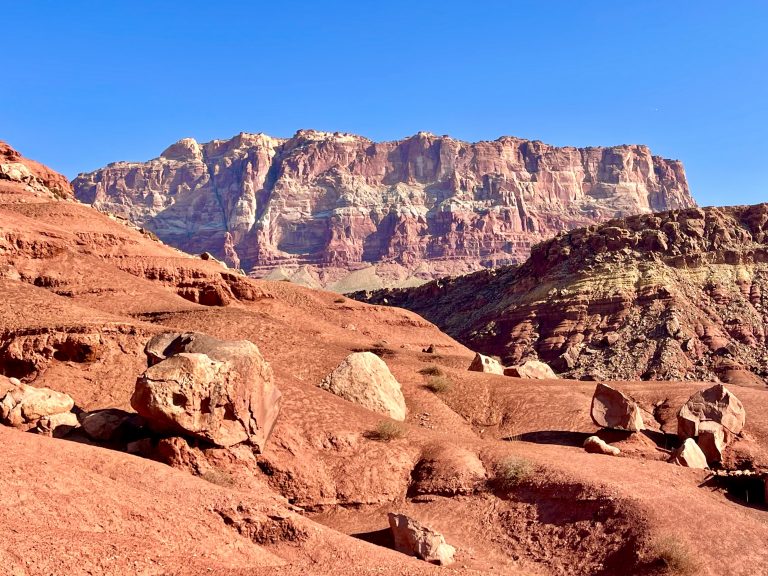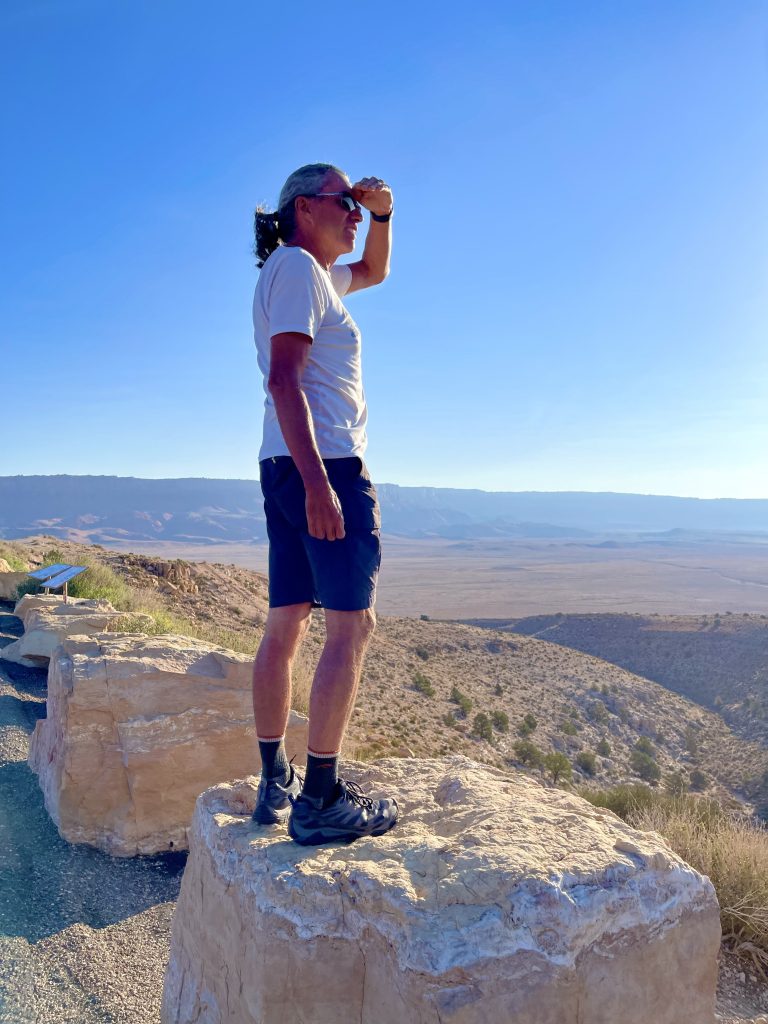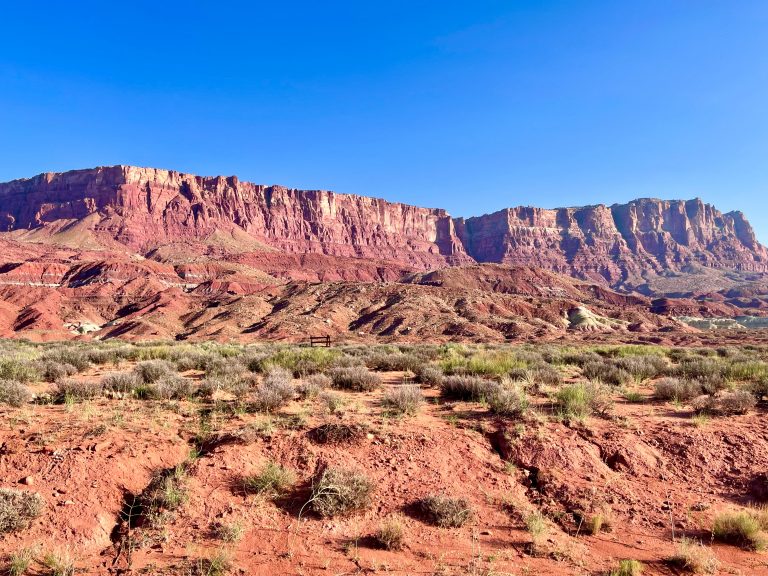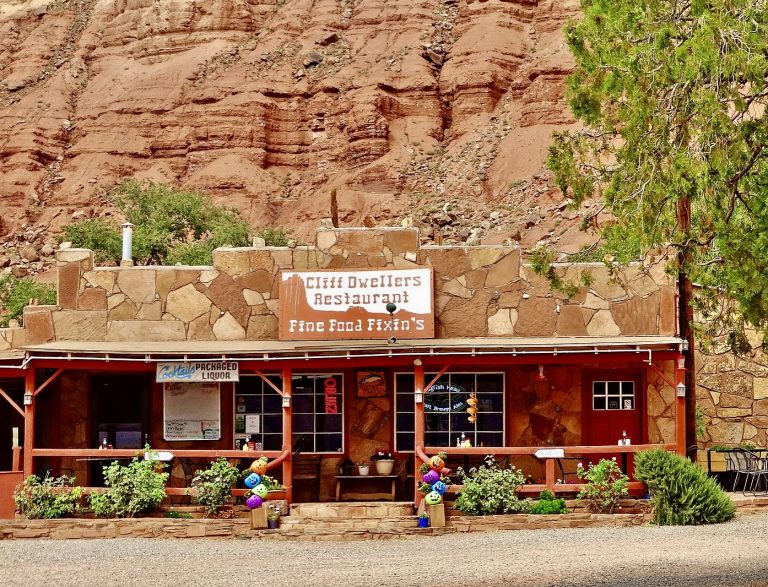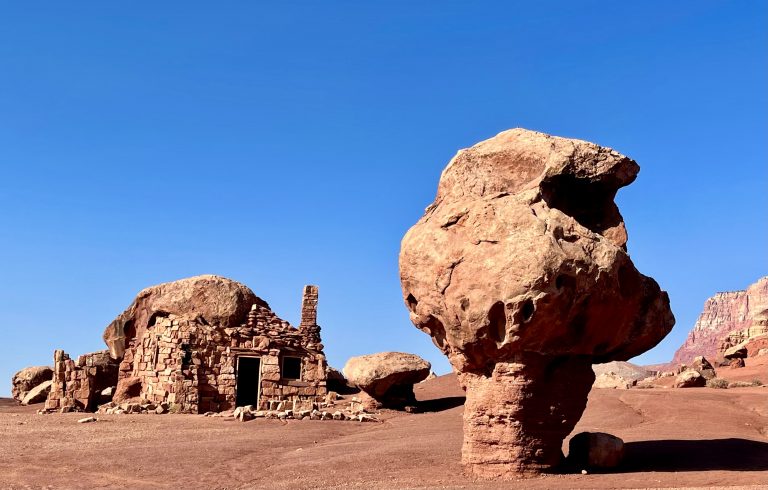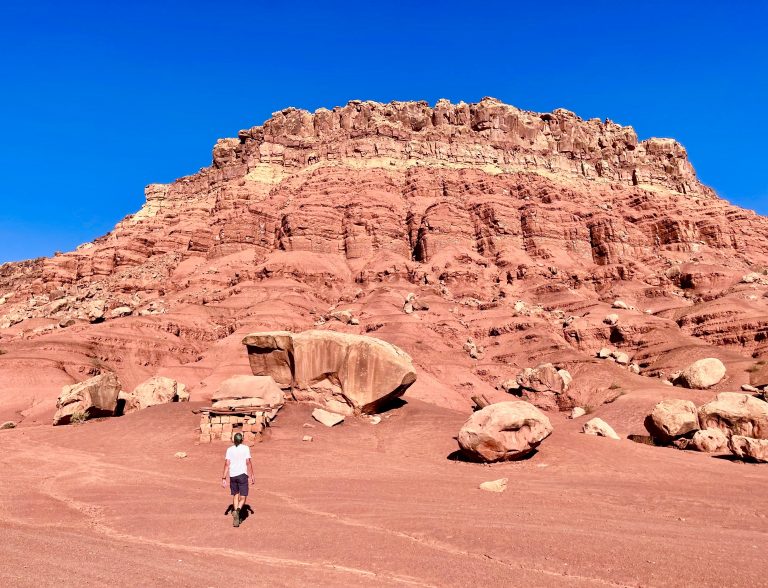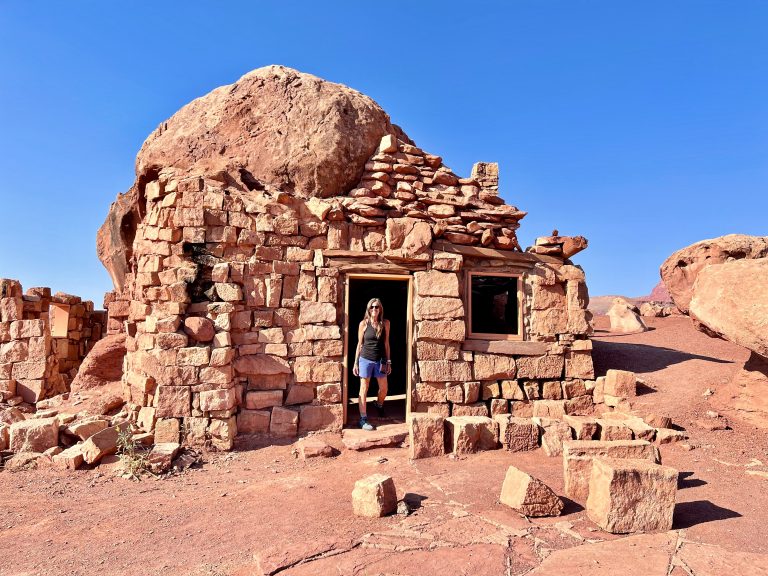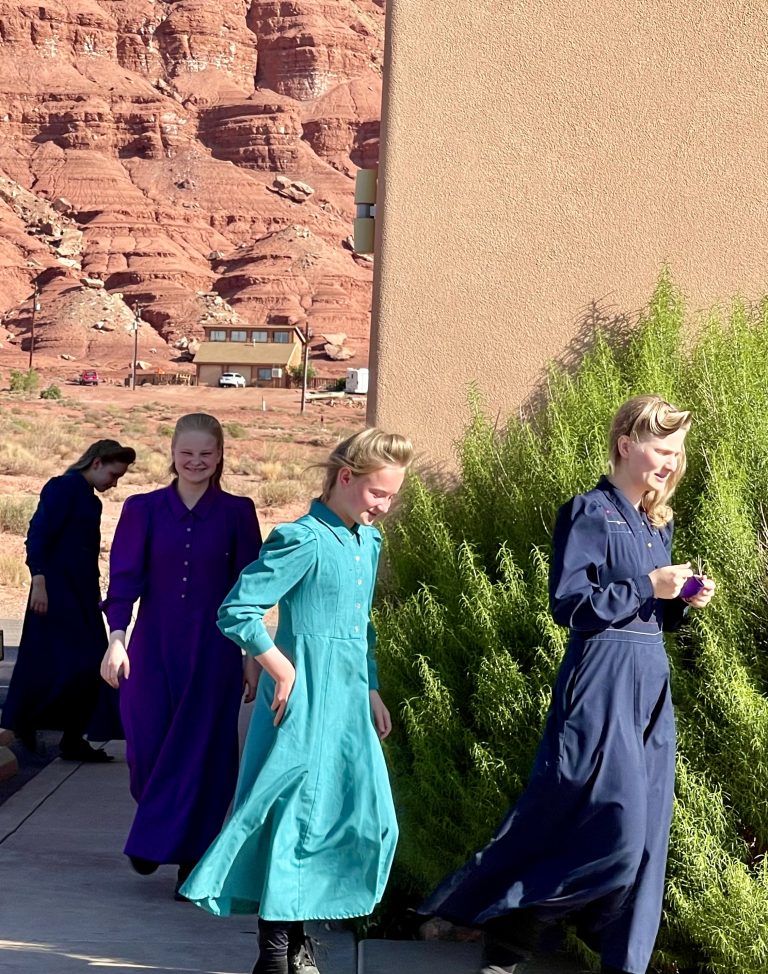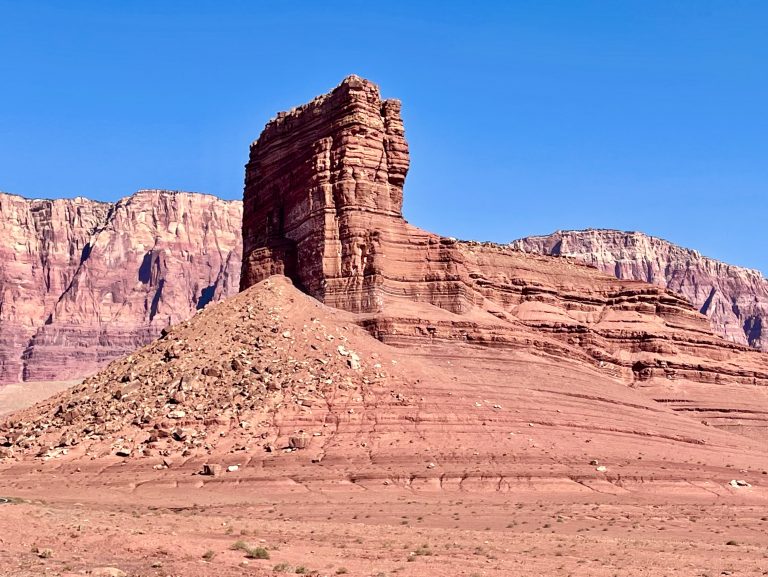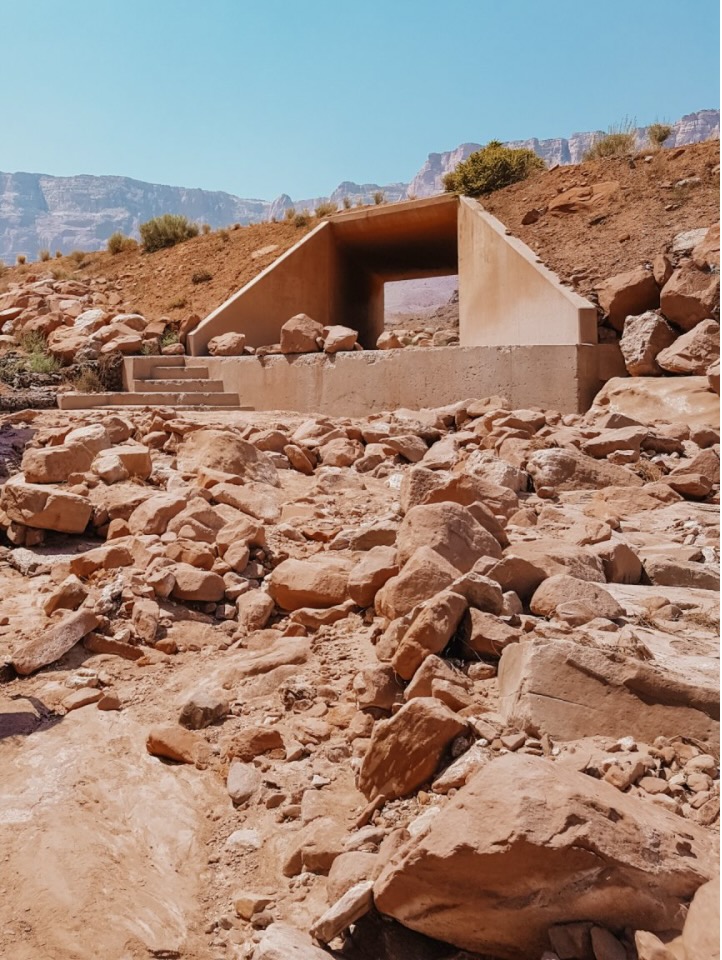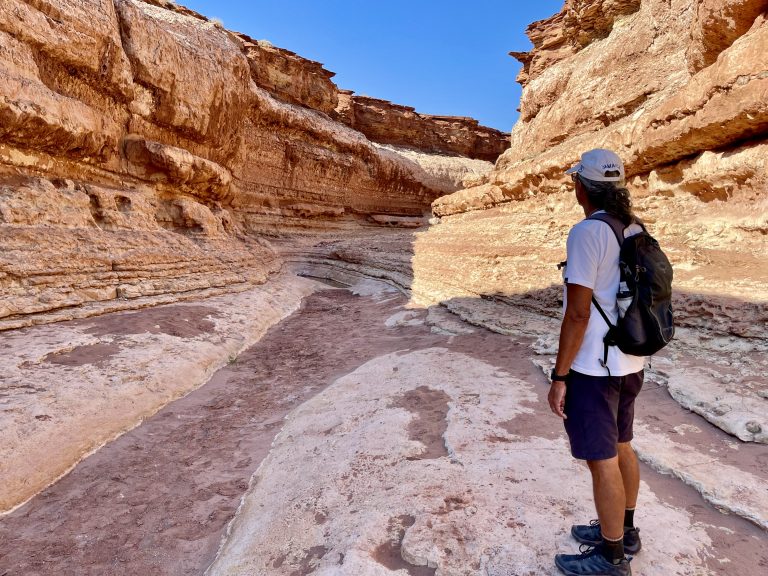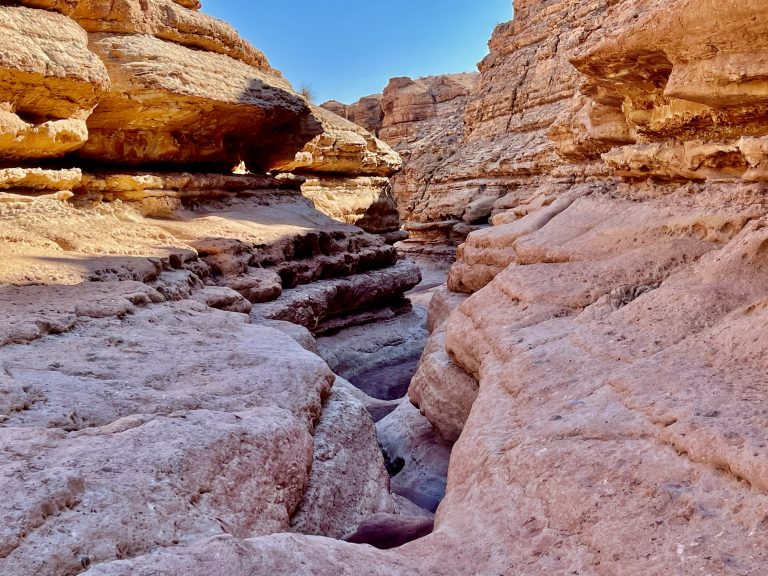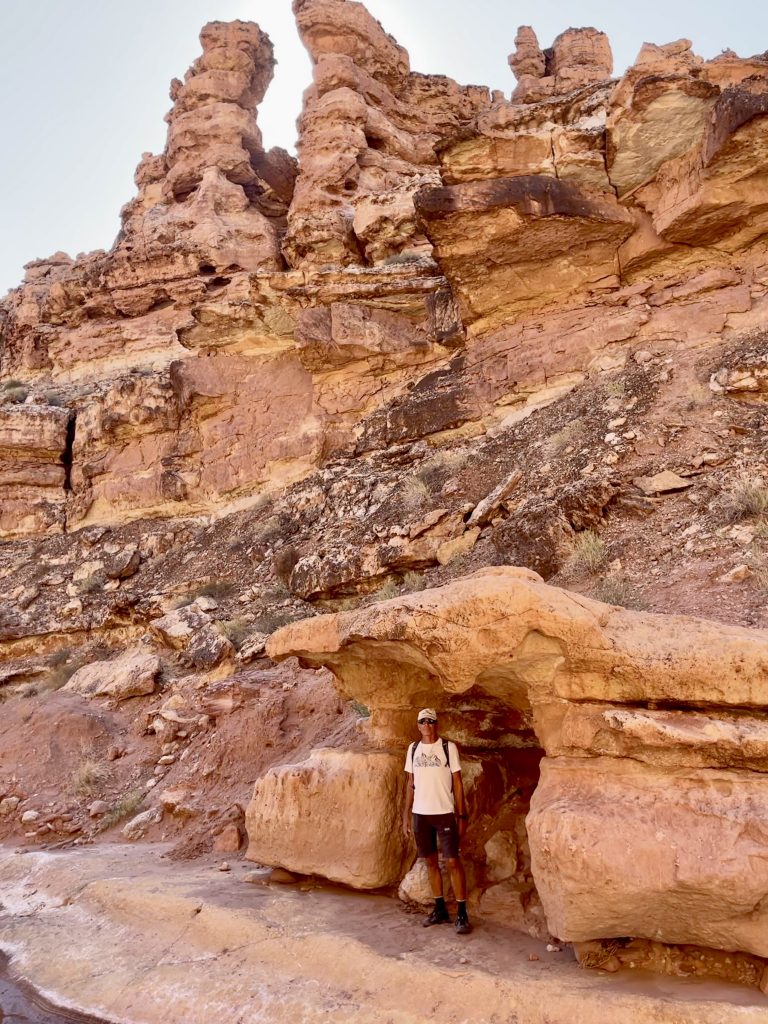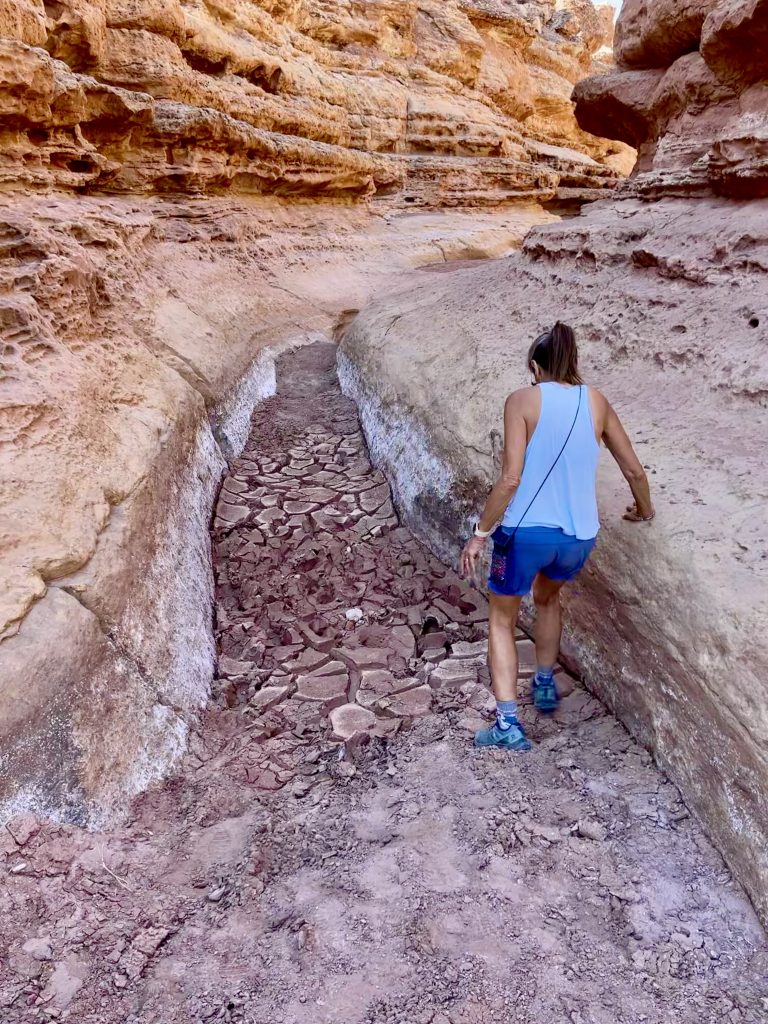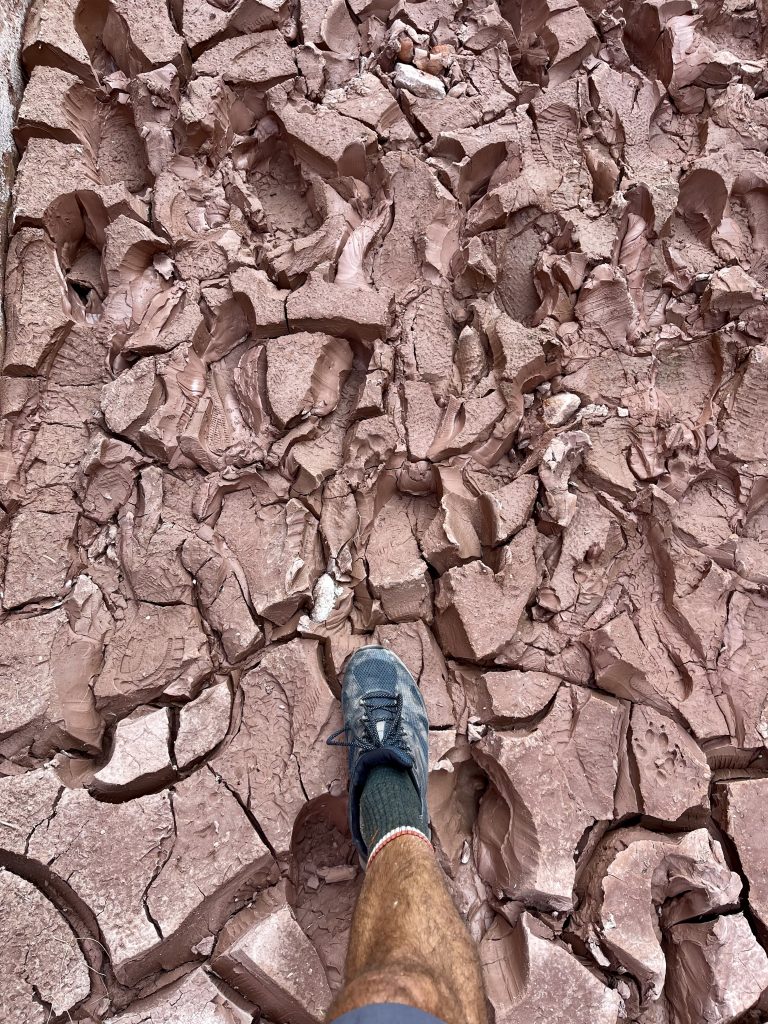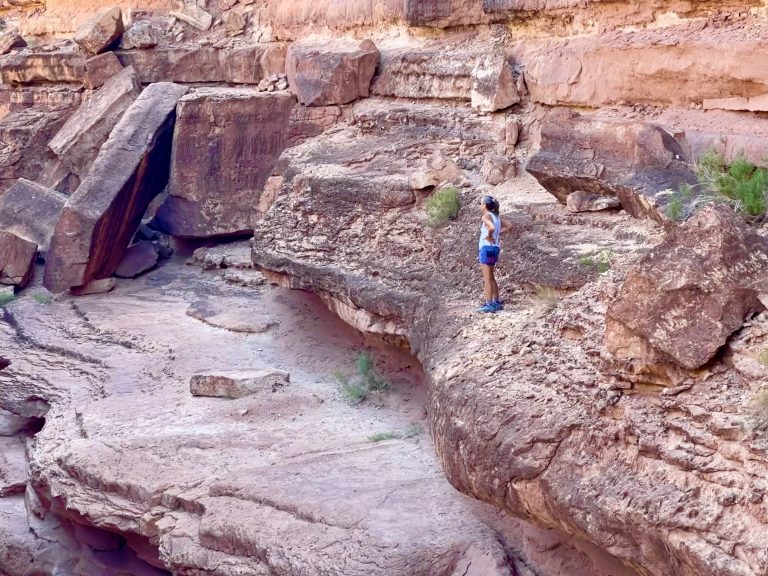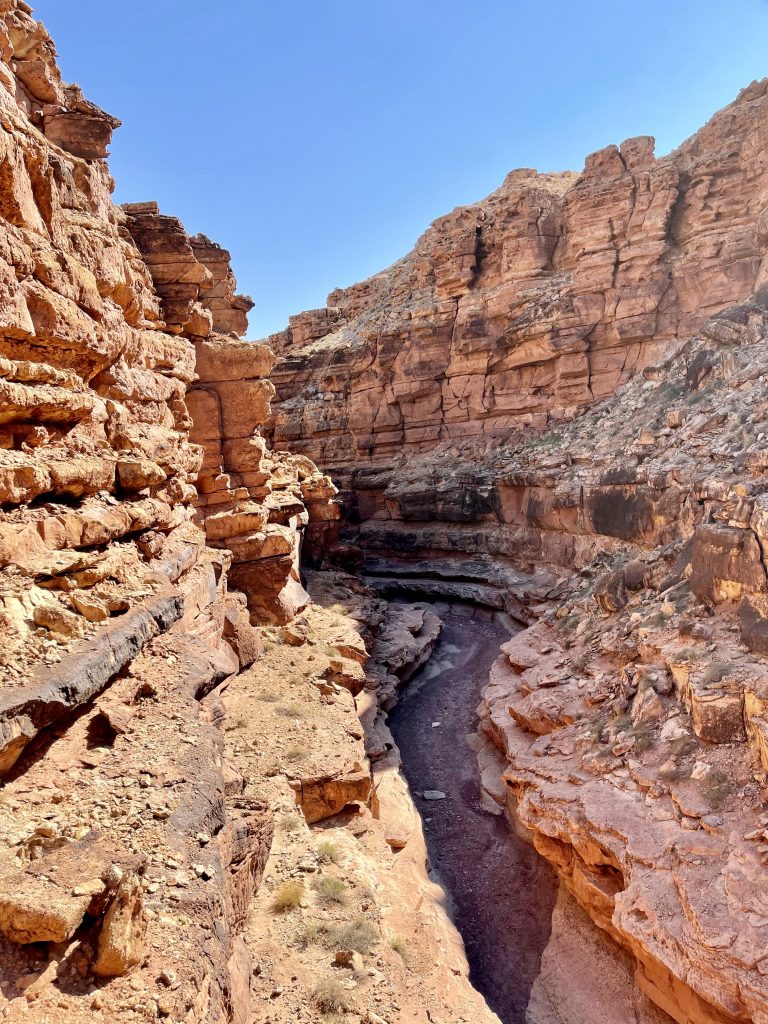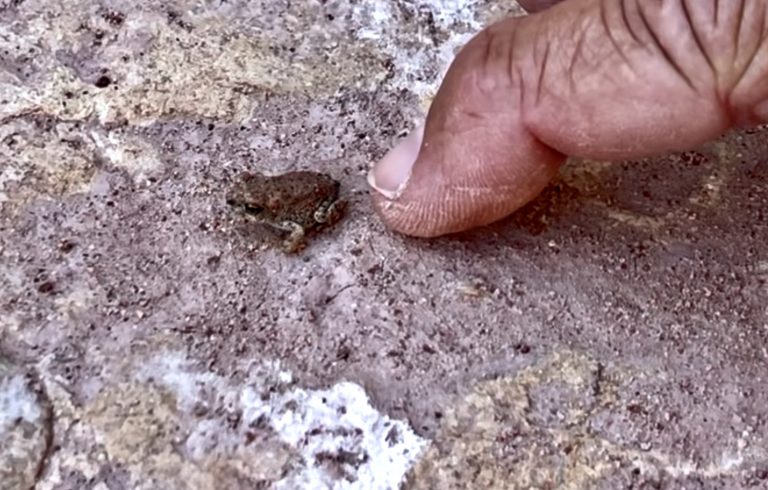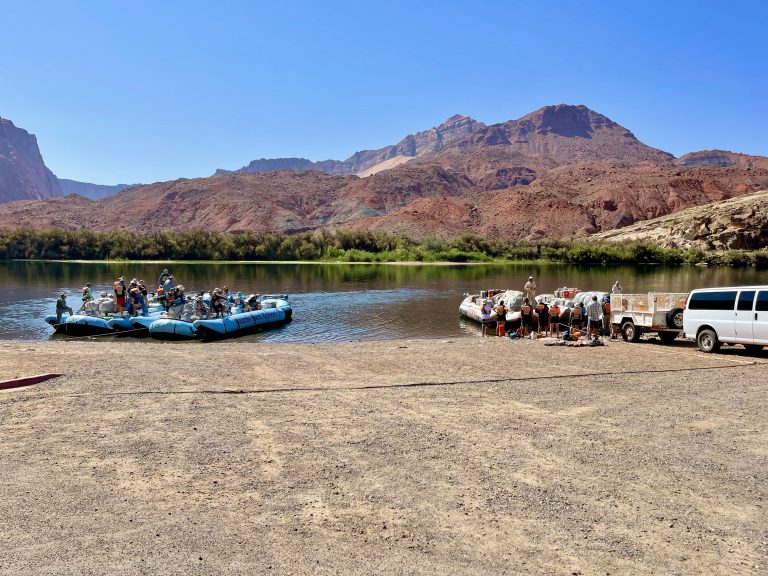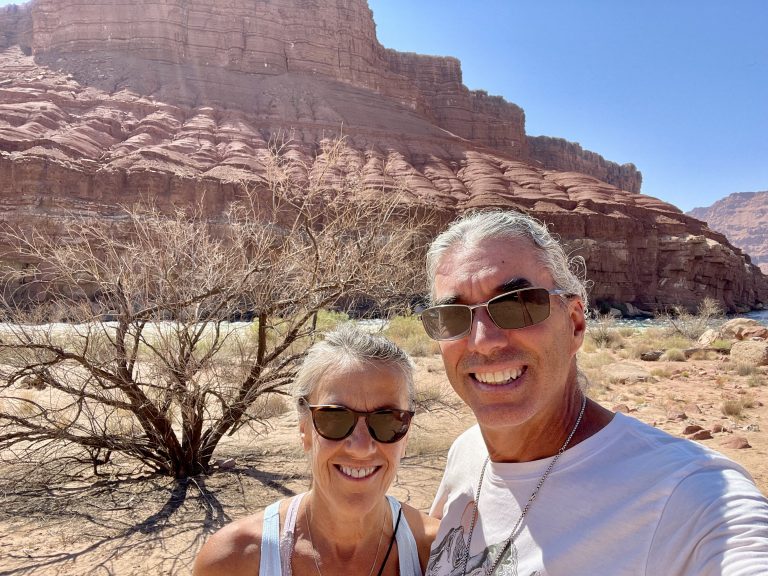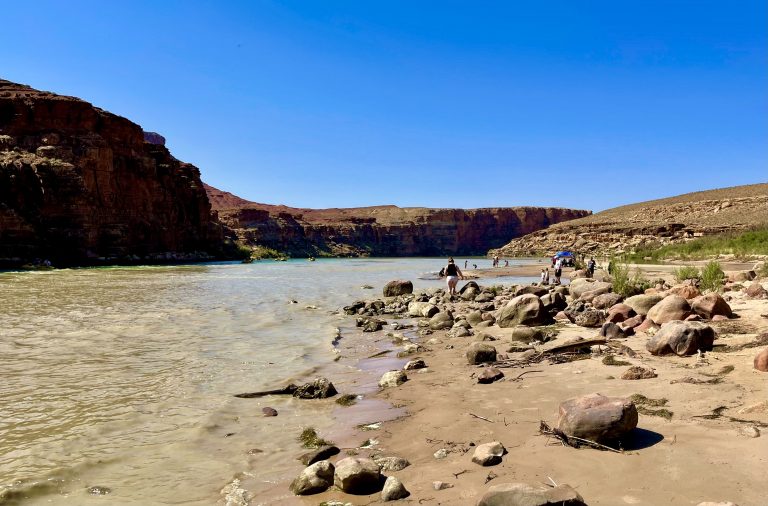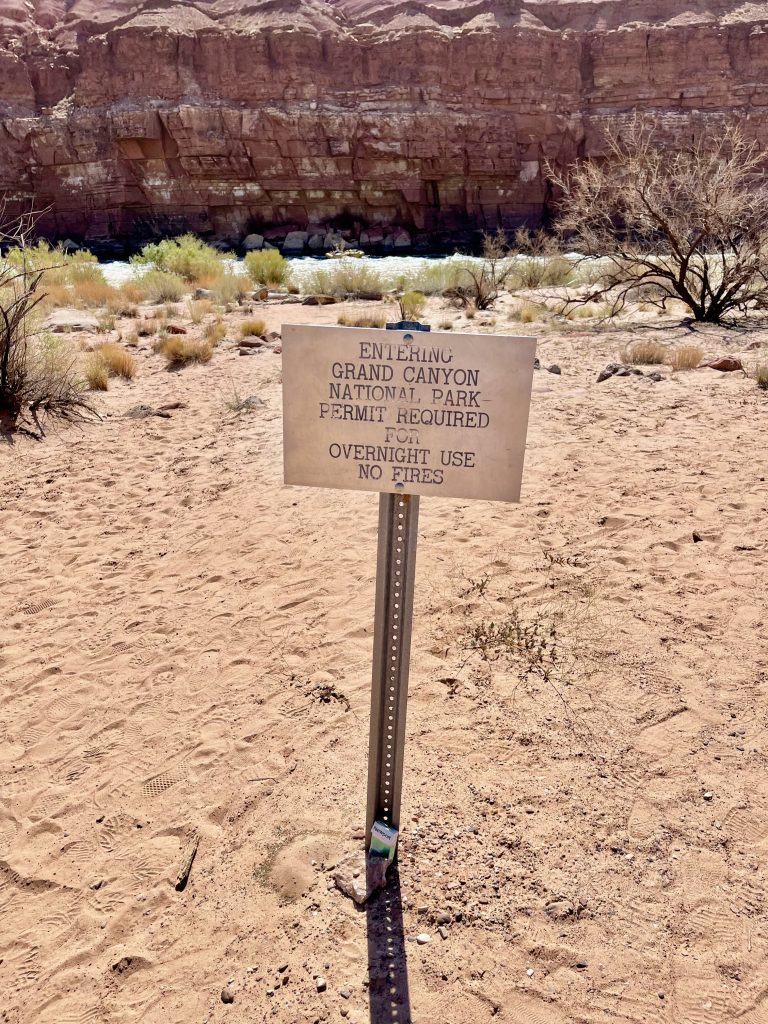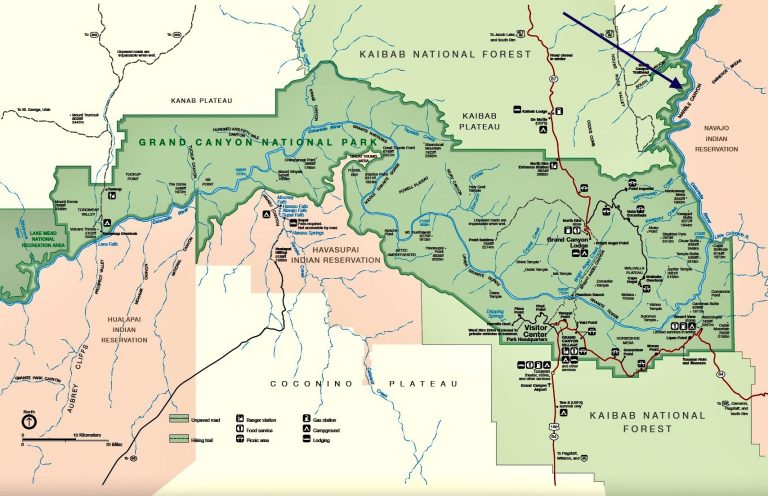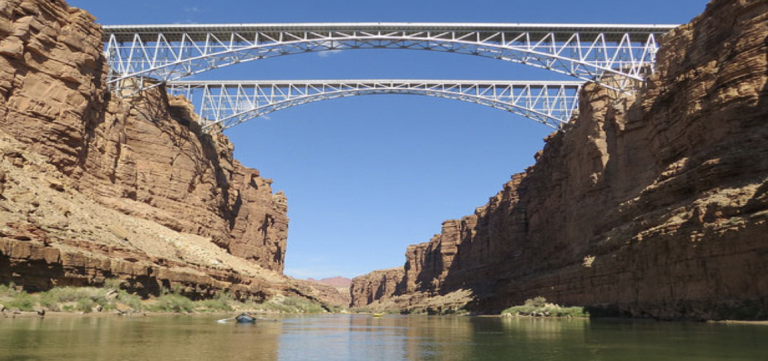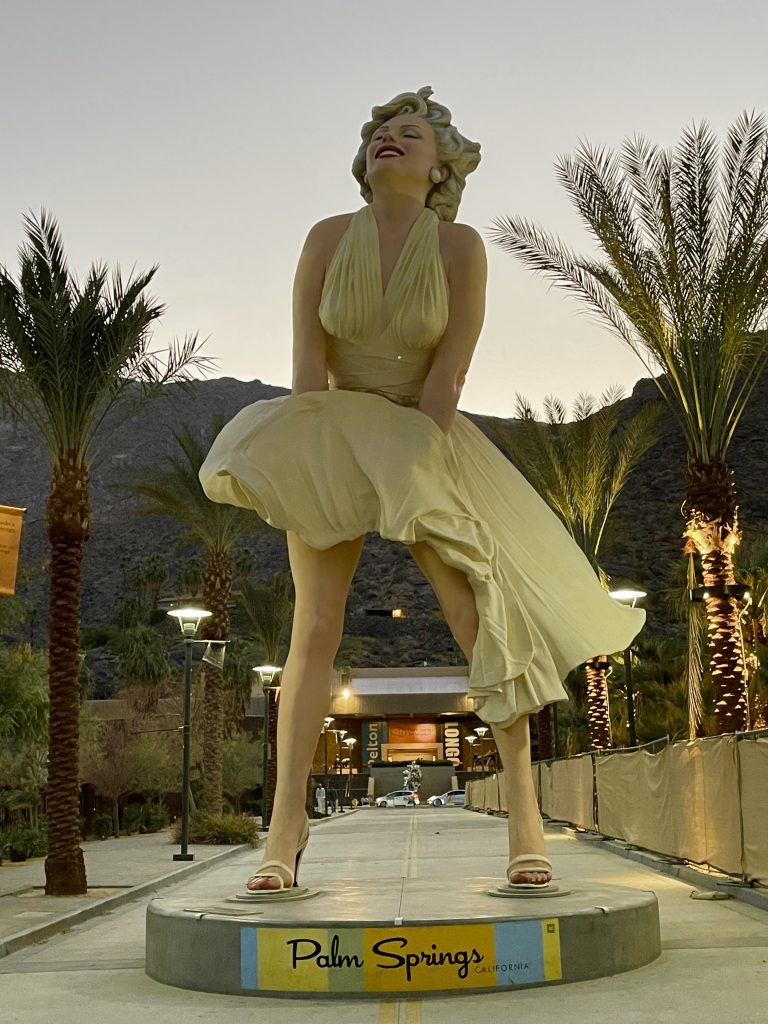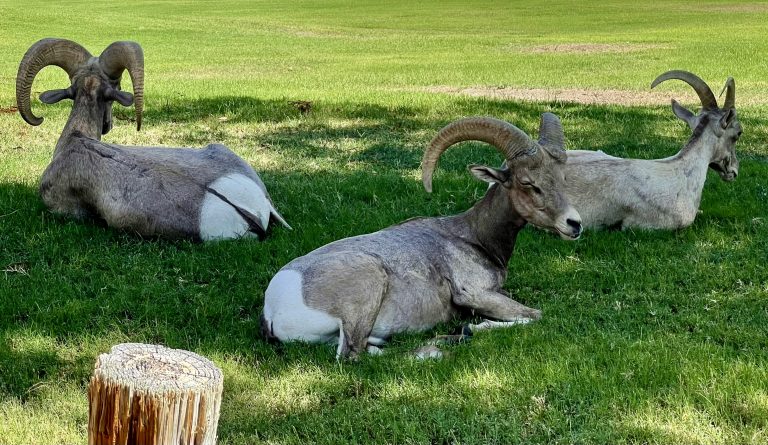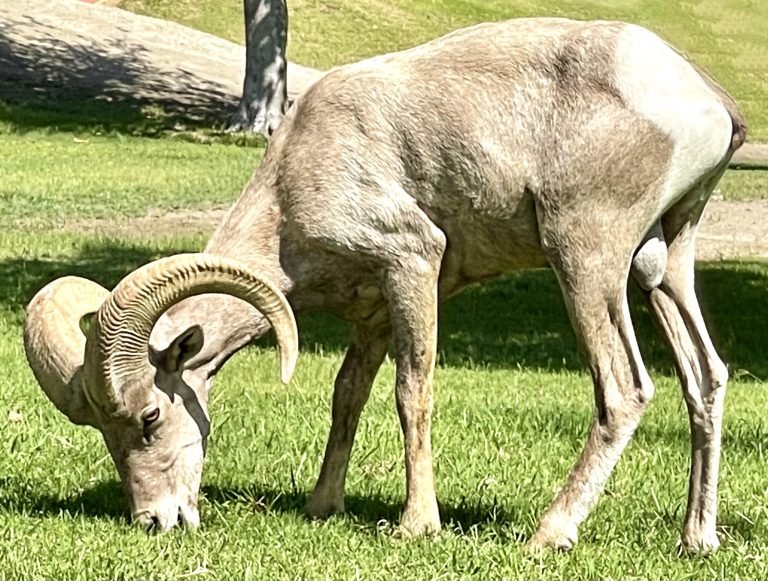September 6, 2021
As with any couple, Susan and I each have our strengths and weaknesses. When it comes to navigating, Susan is usually better at roads and routes and I’m typically better with trail navigating. Things get a little fuzzy when we’re on seldom-traveled narrow dirt roads like the ones we came in on the evening before; part road, part trail.
Certain I knew where I was going, we left our campsite and headed back, turning onto several unmarked dirt roads until I was sure we’d find the highway. Susan was not so sure (see above about roads) and thought we needed to make an additional left turn when we started out, but I kept going where I thought the myriad double-track dirt roads would take us out of the forest. After not passing the landmarks we’d come by on the way in, eventually Susan persuaded me to look at our Gaia GPS app, where I found that I was wrong all along but—I smugly noticed—the faint dirt road we were on would still take us to the highway via a different route. My sense of wilderness navigation was vindicated.
By now, we’d driven for a good 20 minutes along several different rough tracks and I was glad I wouldn’t have to backtrack. Finally, we were only a quarter mile from the highway according to the map (see, I told you I’d find it!) when just around a sharp rocky turn, a huge tree had fallen across the dirt road, hanging up about seven feet off ground. With the roof-top carrier, the truck was about seven-and-a-half feet high. Damn. I thought about taking everything out of the carrier and then removing it (not an easy thing), but it would be my luck another deadfall would be around the next corner and I’d have to do it again. I reluctantly turned the truck around on the narrow road and realized that we had at least twenty minutes to get back the way we’d originally come in. I’d wasted close to an hour thinking that I was infallible on trails and sort-of-kind-of apologized for not listening to the road navigator three minutes after we’d left the campsite.
Finally back on the highway, we drove a long downhill slope out of the forest toward Vermilion Cliffs National Monument. We stopped at an overlook and were taken aback by the complete change in scenery from the green mountain scenery of the Kaibab National Forest to the vast desert scenery edged by the Vermilion Cliffs in the distance.
We wound our way down the mountain into the vast nothingness and headed in the direction of Marble Canyon, Arizona. We were hoping to find a picnic area to make breakfast but instead stumbled upon the only restaurant for perhaps a hundred miles, the funky Cliff Dwellers Restaurant perched against the red cliffs. We pulled off and enjoyed the view and a somewhat overpriced breakfast on the patio.
After the decent meal, we drove for just a few minutes until strange rock formations appeared by the side of the road, along with a couple of Navajo women setting up tables to sell their trinkets, and we stopped to walk around. The place looked like it should have been a small national monument with all the strangely-balanced rocks as well as the remains of stone houses built right into some of the rocks, which apparently were built in the 1930’s by travelers seeking shelter en route to the Grand Canyon. There were no fences, no signs and, thankfully, no graffiti.
Afterward, we stopped for gas and, not surprisingly, saw a group of Orthodox Mormon women, looking more Amish in their long dresses — this was still Arizona but we were only 10-15 miles from the Utah border.
Sadly, we didn’t have the hard-to-get permits to explore “The Wave”—the most famous feature of the area—but we found other treasures to discover, one of which was the trail for the Cathedral Wash slot canyon, which went all the way to the Colorado River.
Eventually, we came to a 20-foot-high dry waterfall that would have required ropes and skill to descend, of which we had neither. There was no way around it so we went back, content for the beautiful section we were able to see. As a bonus, we were the only people on the three-mile round-trip trail.
After returning to our truck, we drove up the road to Lees Ferry, just a few minutes away in the Glen Canyon National Recreation Area. At the end of the road at the fast-moving Colorado River, we saw groups of people loading up onto rafts for trips on the river that went through the Grand Canyon—another activity that requires permits long in advance.
Just as we were about to leave, we stumbled upon a sign informing us, much to our surprise, that we were somehow walking within the boundaries of the Grand Canyon National Park . . . again.
Leaving the area, we crossed over historic Navajo Bridge. The first of the pair of high bridges (each is called Navajo Bridge) was built in the 1920’s to replace ferry service across the Colorado, and is now just for pedestrians and horses. The second bridge was built in the 1990’s to meet modern highway standards.
Once we crossed the river, the road finally started started heading south and then west. We’d been traveling north and east for some 85 miles ever since we left the North Rim, even though we ultimately wanted to head south and west—as this was the only route out.
It was time to head back to California. We made a stop in Palm Springs, where we got a great deal on a nice cool hotel—it was 111 degrees and definitely off-season there. Even in the heat, we enjoyed an evening out exploring the town and before departing in the morning we even spotted a herd of big horn sheep at a local park. From there we stopped in Los Angeles to see some of our kids before the long slog back home to Northern California.

